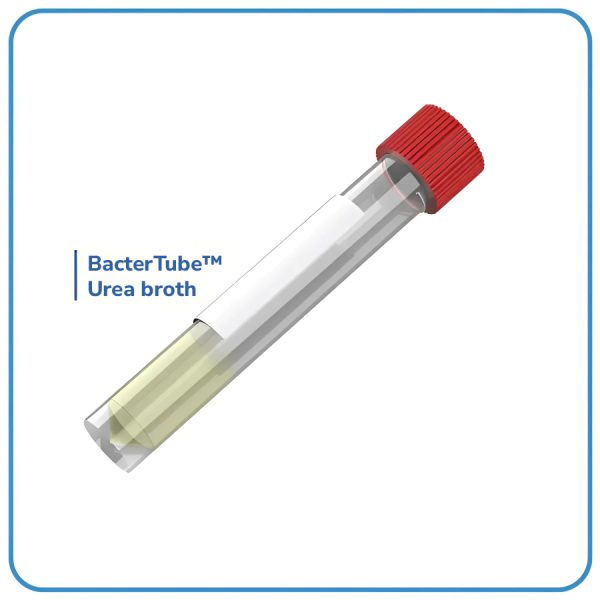INTENDED USE
- BacterTube™ Triple Sugar Iron Agar is a medium used to perform biochemical tests for the fermentation of glucose, lactose, and sucrose (with or without gas production), hydrogen sulfide (H₂S) production, and gas generation for the identification of Gram-negative bacilli.
PRINCIPLES
- The fermentation of sugars leads to acidification, which causes the phenol red (pH indicator) to change from red to yellow.
- The detection of bacteria that ferment only glucose is facilitated by reducing the concentration of lactose or sucrose to 1/10, thus allowing a small amount of acid produced on the slant surface during fermentation to be rapidly oxidized. This causes the red color to return quickly or, alternatively, the alkalinization process becomes more pronounced. In contrast, the acidic reaction (yellow color) is maintained at the depth of the agar, at the bottom of the tube.
- Bacteria that ferment lactose or sucrose will turn the slant portion of the tube yellow.
- Bacteria that do not ferment any of these sugars will not alter the color of the medium.
- The production of H2S is observed at the bottom of the tube by the appearance of a black color, due to the reduction of thiosulfate in the presence of ferric citrate, forming iron sulfide.
- Gas production (H2, CO2) resulting from the fermentation of sugars is indicated by the presence of bubbles or the splitting of the agar.


 Tiếng Việt
Tiếng Việt











